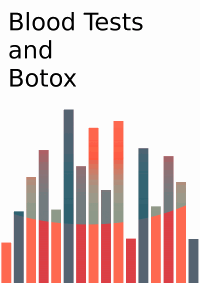Researchers Looking for Predictors of Botox Success in Migraine
Excuse the complicated title to this article, but this is what it means in plain language. Botox, or onabotulinumtoxinA, has been very helpful for patients with chronic migraine. But it certainly helps some people more than others. Researchers want to know why, and they also want to know if there is an easy way to predict which patients will respond best to Botox.
 Today, patients need to go through all the treatments before they know if they will work. But what if you could go for a simple blood test which would tell you ahead of time that your treatment had a – say – 87% chance of success? Or maybe a 16% chance of success? That would save everyone a lot of time and money.
Today, patients need to go through all the treatments before they know if they will work. But what if you could go for a simple blood test which would tell you ahead of time that your treatment had a – say – 87% chance of success? Or maybe a 16% chance of success? That would save everyone a lot of time and money.
A study published earlier this month in the journal Headache found that certain markers may predict Botox success.
First, CGRP levels. We’ve heard a lot about CGRP (calcitonin gene-related peptide) lately, because of the new migraine medications that are coming out. CGRP levels an important part of the trigeminovascular system, and seem to play a role in communicating pain messages in the body. Levels were higher in patients who responded well to Botox treatment. (This is not the first time this has been observed – see Botox and CGRP – and the Future of Migraine Treatment
Second, PTX3 levels. High PTX3 (pentraxin 3) levels have been linked to inflammatory and vascular issues. Patients with higher PTX3 levels were also more likely to respond to onabotulinumtoxinA treatment.
Though this is likely one of many studies that need to be done, this kind of information will not only help us predict who is most likely to benefit from Botox treatment, but should also help us understand both disease and treatment better, so that we can make better options available in the future.
Read the study abstract here: CGRP and PTX3 as Predictors of Efficacy of Onabotulinumtoxin Type A in Chronic Migraine
